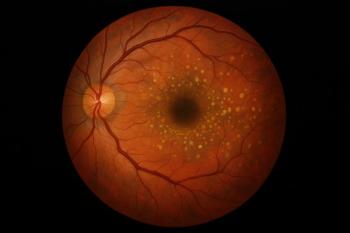
Patient Engagement: Access is the Future of Healthcare
The pandemic has brought patient self-service to the fore.
What do medical practices have in common with Uber Eats, Amazon and Netflix? People can now connect with their medical providers just as easily as they can order a meal, send a gift or stream a movie.
In rapid acceleration, physicians’ offices are enabling patient access to services with immediate digital and mobile-friendly solutions. The last 12 months incited big changes to the healthcare industry. As a result, we now see dramatic and permanent focus on patient self-service as a means of treating and engaging with patients. Platforms like Uber Eats, Amazon and Netflix leverage convenient, customer-centric services – and healthcare operations can take advantage of the same, showing their readiness for innovation.
Moving toward greater patient empowerment
Traditional methods of healthcare operations involved a clipboard, a stack of forms to fill out, a phone and strict office hours. These were all processes for the practices’ main functions: keeping patient information up to date, managing staff workload, maintaining control of providers’ schedules, seeing patients and getting paid. While these processes were necessary to move information along, there was nothing about them that could focus on the experience of the person coming in for care. The “patient experience” was limited to someone’s person-to-person interactions with the staff and practitioner. Patient portals were supposed to solve many of these issues, but adoption has fallen woefully short.
Practices and health systems are finding a better way.
When practice operations set up shifts from information distribution to patient engagement, we see three crucial key changes:
- More accurate, immediate and centralized data
- The efficient and productive automation of essential services
- Empowered patients, successfully involved in their treatment and outcomes
We consider the modern approach to be patient-centric, versus the old method of sitting them in a chair with a stack of paperwork for half an hour. The truth is, putting the patient experience in the spotlight serves to remind us that practices can be more efficient, productive and profitable by enabling patient access. Flipping the previous model to support patient access still checks off all the right boxes across the board for patients, providers and staff.
What we now see in the patient experience is the actualization of patient empowerment.
We kicked off 2021 with a great panel webinar, The Digital Transformation in Healthcare, and gained valuable insight from practice administrators on the progress of patient empowerment.
Thomas Eye Group CEO Ben Seals told us that “The whole idea of social distancing has given us this opportunity to leverage technology to allow patients to self-serve and provide us with the information that we need. Technology is something that patients look to us to implement to be a service to them.”
Tyler Nelsen of North Idaho Dermatology agreed and added, “What we’ve noticed in the past year is that patients are actually demanding to have those pieces of technology be implemented. Not only have we been able to implement a ton during COVID and change a lot of the landscape, but we’re staying true to that patient empowerment and allowing them to take charge of their healthcare.”
This tells us that technology solutions that elevate practice administration and centralize data facilitate patient empowerment in the process. What practices needed in 2020 to ensure safety are finally meeting the demands of the patient-consumer – and giving them control in their healthcare interactions.
The empowered patient can:
- Find providers that meet their needs and preferences
- Schedule, modify or cancel appointments with just a few clicks
- Get relevant information prior to their visit
- Check in for their appointment
- Provide or update profile information
- Check insurance eligibility and co-pays
- Remit payment
- Access pre- and post-visit messages, among other information
These abilities and this access streamline and benefit the practice in return.
Patient empowerment, next steps
The successful shift to patient empowerment requires an approach rooted in five proven best practices:
- Know your goals. Understand the case for a technology solution and your patients’ needs. Know what customization will require in terms of features, user capabilities and integrations.
- Look for “future-proof” tools. Find a solution that addresses your immediate needs and can scale with your practice’s growth.
- Centralize and simplify. To drive adoption, consider technology that’s easy to use for providers and patients alike. For patients, that means accessibility on any device, at their convenience.
- Implement effective change management. Keep providers, staff and patients in the loop of workflow or accessibility changes, as well as the benefits. Early and consistent communication is key.
- Take a crawl-walk-run approach. There are many advantages and paths to patient empowerment. Practices often experience the greatest success when they have a plan – prioritizing use cases with the greatest need and where it’s easiest to show ROI. After ensuring workflows are intuitive and utilization is high, roll out capabilities in other areas.
Patient empowerment = healthy growth
For practices and health systems, enabling patients to more actively participate in their medical journeys and care plans is an essential initiative, and it’s an area where we’ll continue to see opportunities for growth and innovation.
Mike Lamb is CEO of Clearwave, a patient engagement and scheduling company in Atlanta.
Newsletter
Get the latest industry news, event updates, and more from Managed healthcare Executive.




















































